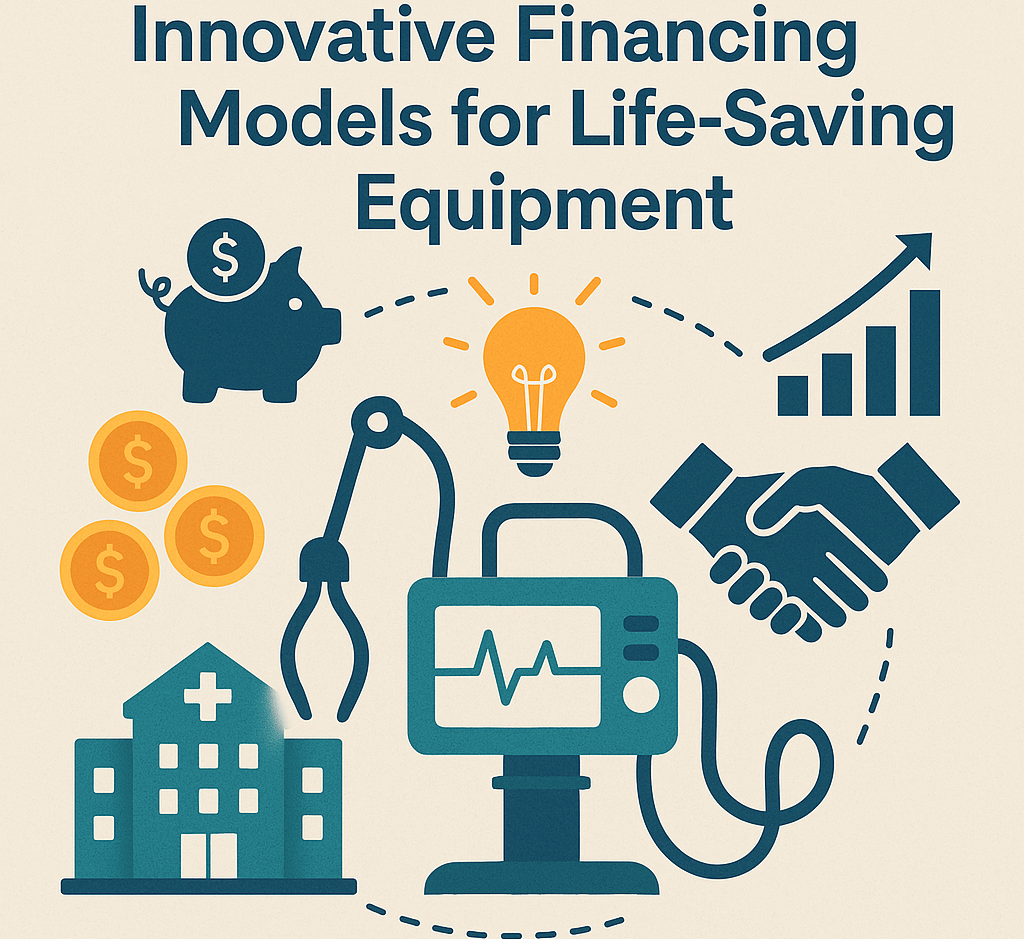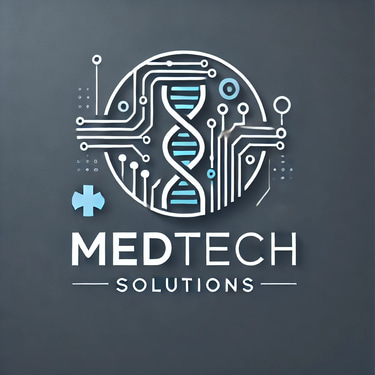Innovative Financing Models for Hospitals to Acquire Life-Saving Equipment
Access to medical equipment is a critical component of healthcare delivery, yet many hospitals—especially in low- and middle-income countries (LMICs)—struggle with financing life-saving technologies. Traditional procurement models often rely on large capital investments, which many healthcare institutions cannot afford. This has led to the emergence of innovative financing models designed to improve access, efficiency, and affordability of essential medical equipment. This article explores the evolution of hospital financing, successful case studies, challenges faced, and future prospects in the field.
Madtechoptions
3/29/20253 min read


Historical Perspective on Hospital Financing Models
Historically, hospitals primarily acquired medical equipment through direct purchases using government funding, donor contributions, or hospital revenues. However, these methods have often been unsustainable due to fluctuating budgets, economic downturns, and high capital costs.
For instance, in the 20th century, many public hospitals in Africa and Asia depended on foreign aid for expensive machines like MRI scanners and ventilators. This approach led to short-term relief but created long-term dependence on donor goodwill. Moreover, the lack of maintenance and training resulted in equipment failures and wastage. A 2011 study by the World Health Organization (WHO) estimated that up to 70% of donated medical equipment in developing countries is non-functional due to lack of spare parts and servicing capacity (WHO, 2011).
To address these challenges, alternative financing models have emerged, offering more sustainable solutions.
Innovative Financing Models for Medical Equipment
1. Leasing and Rental Models
Leasing allows hospitals to use medical equipment for a fixed period while paying a periodic fee. This model helps reduce the burden of large upfront costs and includes maintenance and upgrades as part of the lease agreement.
Example: GE Healthcare’s “pay-as-you-go” model in Kenya enables small clinics to access high-end imaging equipment without the need for large capital investments. This has improved early disease detection rates in underserved areas (GE Healthcare, 2020).
2. Public-Private Partnerships (PPPs)
PPPs involve collaboration between government agencies and private companies to fund, procure, and manage medical equipment. Governments benefit from private sector expertise, while private entities secure long-term contracts and financial returns.
Example: The Indian government partnered with Philips Healthcare in 2015 to provide MRI and CT scan services in state hospitals under a revenue-sharing model. This increased access to diagnostics in rural areas while maintaining cost-effectiveness (Philips India, 2018).
3. Equipment-as-a-Service (EaaS)
Similar to software subscriptions, EaaS allows hospitals to access medical devices on a subscription basis, ensuring continuous upgrades and maintenance.
Example: Siemens Healthineers offers an EaaS model where hospitals pay per scan or usage rather than purchasing the entire machine. This is particularly useful for expensive equipment like MRI scanners, which require frequent updates (Siemens Healthineers, 2021).
4. Impact Investing and Development Finance
Social impact investors and development finance institutions (DFIs) provide funding to hospitals with the aim of generating both social and financial returns.
Example: The International Finance Corporation (IFC) partnered with Aga Khan Hospitals to finance the purchase of advanced medical equipment across Africa and Asia. The initiative has improved access to quality healthcare in remote regions (IFC, 2019).
5. Crowdfunding and Microfinance for Healthcare Facilities
Crowdfunding platforms allow hospitals to raise funds directly from the public for specific medical equipment needs, while microfinance institutions provide small loans tailored for healthcare providers.
Example: In Nigeria, the crowdfunding platform GiveDirectly helped fund dialysis machines for underfunded hospitals, reducing patient costs and increasing access to treatment (GiveDirectly, 2022).
Success Stories: Hospitals That Have Benefited from Innovative Financing
Case Study 1: Rwanda’s National Referral Hospitals and Leasing Model
In 2018, the Rwandan Ministry of Health introduced a leasing model in collaboration with Medtronic. This approach provided hospitals with cardiac monitoring and imaging equipment at an affordable monthly rate. Within two years, heart disease diagnosis rates improved significantly, and treatment accessibility increased by 40% (Rwanda Ministry of Health, 2020).
Case Study 2: India’s PPP Model for Dialysis Machines
India launched a PPP initiative where the government provided infrastructure while private firms supplied dialysis machines and operational expertise. The result was a fivefold increase in dialysis centers, lowering treatment costs by 60% and saving thousands of lives annually (India Ministry of Health, 2021).
Challenges in Implementing Innovative Financing Models
While innovative financing models have shown success, they also face several challenges:
Regulatory and Legal Barriers – Many countries have complex procurement laws that make leasing or PPP agreements difficult to implement.
Sustainability Concerns – Long-term viability of financing models depends on financial stability and continued private sector interest.
Technological Obsolescence – Rapid advancements in medical technology may make leased or subscription-based equipment outdated sooner than expected.
Equity and Access Issues – Some financing models may favor urban hospitals over rural facilities due to higher revenue potential in cities.
Future Outlook: The Role of Technology and Policy in Financing Medical Equipment
The future of medical equipment financing will likely be shaped by advancements in artificial intelligence, blockchain, and telemedicine. Governments and policymakers can enhance sustainability by:
Promoting tax incentives for private sector investments in healthcare infrastructure.
Creating regulatory frameworks to facilitate smoother PPP agreements.
Encouraging AI-driven predictive analytics to optimize equipment usage and financing models.
Conclusion
Innovative financing models are revolutionizing how hospitals acquire life-saving equipment, making healthcare more accessible and efficient. Leasing, PPPs, crowdfunding, and impact investing are providing sustainable alternatives to traditional funding mechanisms. While challenges remain, strategic policy interventions and technological advancements will play a crucial role in scaling these solutions worldwide.
References:
World Health Organization (WHO), 2011. "Medical Equipment Donations: Considerations for Sustainability."
GE Healthcare, 2020. "Pay-as-you-go Imaging Solutions in Kenya."
Philips India, 2018. "Public-Private Partnerships for Diagnostics."
Siemens Healthineers, 2021. "Equipment-as-a-Service: The Future of Medical Device Financing."
International Finance Corporation (IFC), 2019. "Financing Healthcare Access in Emerging Markets."
Rwanda Ministry of Health, 2020. "Leasing Models for Cardiac Equipment."
India Ministry of Health, 2021. "PPP Initiatives in Dialysis Services."
GiveDirectly, 2022. "Crowdfunding for Medical Equipment in Nigeria."
This structured approach provides a comprehensive overview of financing models for hospitals, combining historical context, current innovations, case studies, challenges, and future trends.
